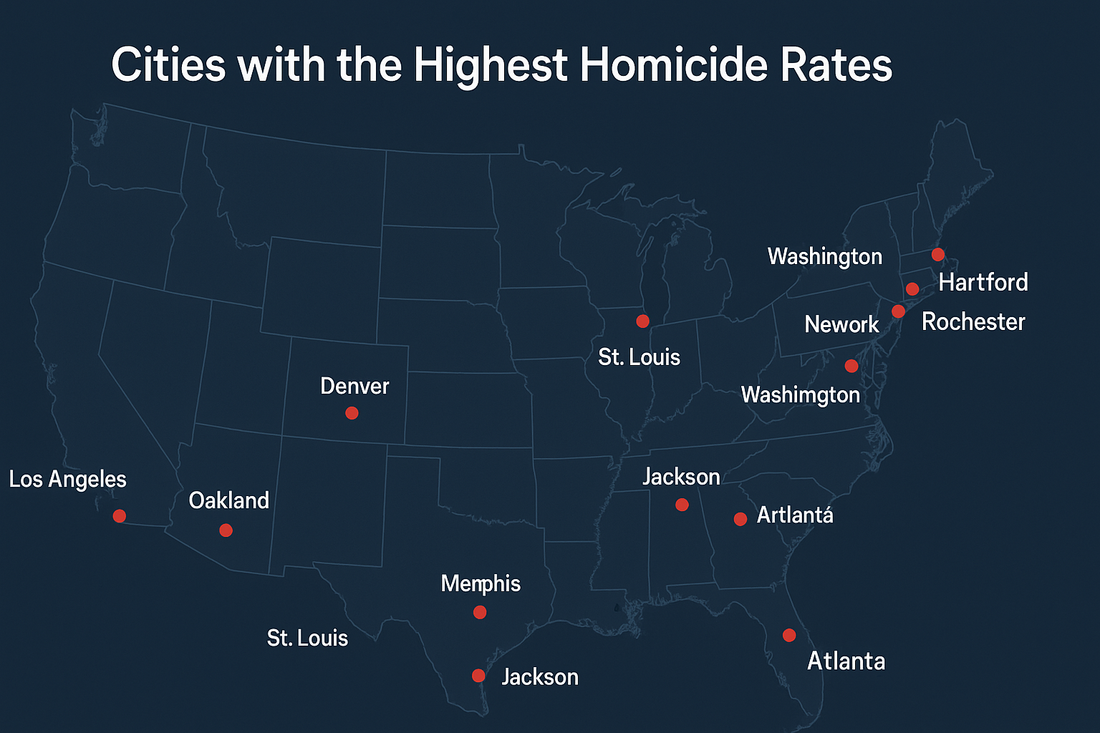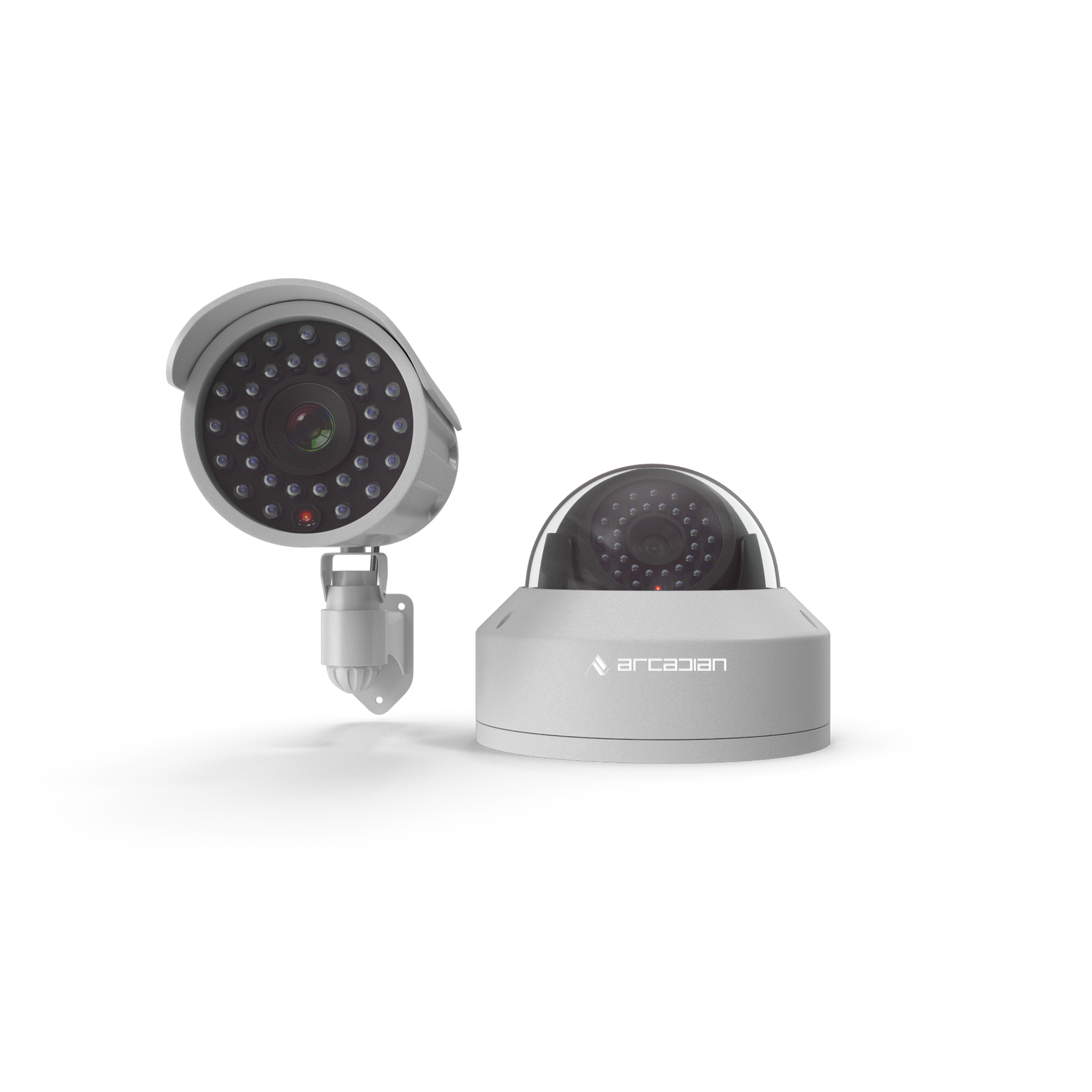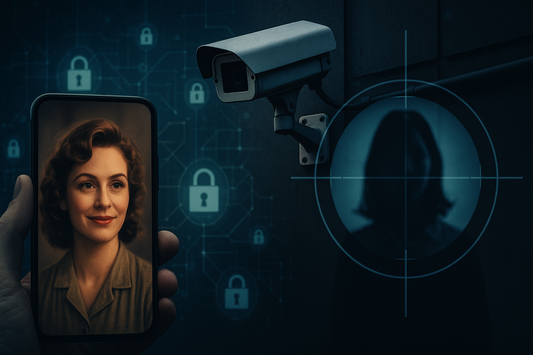Understanding U.S. Homicide Rates: Cities at Risk & How AI Can Help Turn the Tide
Explore compelling homicide data from cities like Jackson, St. Louis, and Detroit, and discover how ArcadianAI + Ranger's cloud-native, camera‑agnostic AI solutions can help communities move from reactive enforcement to predictive safety.

- Introduction
- National Homicide Trends (2023–2025)
- Cities with the Highest Homicide Rates (2024–2025)
- Why Some Cities Face Severe Homicide Challenges
- AI to the Rescue: How ArcadianAI + Ranger Help
- Imaginary (Plausible) Use Case Pilots: AI in Action
- Traditional vs AI-Driven Approach: A Comparative Table
- FAQ (Search-Driven, ≤50 Words Each)
- Conclusion & Call to Action
Introduction
Every year, thousands of Americans become victims of homicide—and while national homicide rates have improved in recent years, stark disparities persist in urban centers. In 2024, the U.S. recorded over 22,000 homicides, with an average rate of approximately 6.8 per 100,000 residents (USAFacts). Encouragingly, homicide rates have slipped further: a 12% drop in 2023, an estimated 14% decline in 2024, and a projected 20% reduction in 2025—collectively marking the lowest levels seen in decades (The Washington Post).
Yet progress isn't uniform. In cities like Jackson, MS (77.2 per 100,000) and St. Louis (54.4 per 100,000), homicide remains a grave public safety concern (Rochester Institute of Technology). These alarming rates reflect deep structural challenges—poverty, racial inequity, disinvestment, and strained policing models—that demand more than traditional responses.
Enter ArcadianAI + Ranger: a cloud-native, camera‑agnostic AI surveillance and analytics platform designed to transform public safety. Unlike legacy systems like Ring or Verkada, ArcadianAI leverages behavioral analytics, real-time alerts, and predictive hotspot mapping to help cities act before violence escalates.
In this post, we'll:
-
Map the cities most impacted by homicide in 2024–2025
-
Unpack underlying causes and systemic drivers
-
Showcase how AI platforms like ArcadianAI + Ranger can empower smarter, more effective interventions
-
Compare traditional tactics with next‑gen AI solutions
-
Offer structured insights, FAQs, and a glossary for clarity
National Homicide Trends (2023–2025)
-
2023 saw a ~12% drop in U.S. homicide rates, moving toward pre-pandemic lows (The Washington Post, Rochester Institute of Technology).
-
2024 continued the decline with an estimated 14% reduction, and 2025 may post a 20% fall, a cumulative three‑year drop that signifies a meaningful shift in homicide patterns (The Washington Post).
-
Still, 13 of the 20 U.S. cities with the highest homicide rates are located in Republican‑run states, many governed by Democrats locally—raising questions about policy tensions and resource allocation (Axios).
Cities with the Highest Homicide Rates (2024–2025)
Drawing from multiple credible sources, here's a detailed list—top 20—of U.S. cities by homicide rate:
From Jackson, MS to St. Louis, MO:
| Rank | City (State) | 2024 Homicide Rate (per 100,000) |
|---|---|---|
| 1 | Jackson, MS | 77.2 (Wikipedia) |
| 2 | Birmingham, AL | ~59 (Axios) |
| 3 | St. Louis, MO | 54.4 (Rochester Institute of Technology, USAFacts) |
| 4 | Memphis, TN | Highest among large cities (USAFacts) |
| 5 | Baltimore, MD | Among top large cities (USAFacts) |
| 6 | Washington, DC | Among top large cities (USAFacts) |
| 7 | Birmingham, AL | Confirmed high rate (USAFacts) |
| 8 | New Orleans, LA | 34.7 (Rochester Institute of Technology, USAFacts) |
| 9 | Detroit, MI | 32.1 (Rochester Institute of Technology) |
| 10 | Indianapolis, IN | Higher than national average (Rochester Institute of Technology) |
| 11 | Richmond, VA | 23.0 (pop <250K) (Rochester Institute of Technology) |
| 12 | Chicago, IL | 21.4 (Wikipedia) |
| 13 | Hartford, CT | 18.4 (drop from 30.1 in 2023) (Rochester Institute of Technology) |
| 14 | Rochester, NY | 18.0 (Rochester Institute of Technology) |
| 15 | Dallas, TX | 14.0 (Rochester Institute of Technology) |
| 16 | Buffalo, NY | 13.9 (Rochester Institute of Technology) |
| 17 | Newark, NJ | 12.2 (Rochester Institute of Technology) |
| 18 | Denver, CO | 8.4 (Rochester Institute of Technology) |
| 19 | Los Angeles, CA | 7.1 (Rochester Institute of Technology) |
| 20 | New York City, NY | 4.7 (Rochester Institute of Technology) |
Key observations:
-
Jackson’s rate of 77.2 per 100K is nearly 15x the national average. (Wikipedia)
-
Birmingham (~59) and St. Louis (54.4) remain chronic hotspots. (Axios)
-
Northern cities like Chicago, Detroit, and Baltimore also rank high, especially among large cities. (Jagranjosh.com)
-
Smaller cities like Richmond, Hartford, Rochester show moderation but still exceed the national average. (Rochester Institute of Technology)
Why Some Cities Face Severe Homicide Challenges
Root Causes & Structural Drivers
-
Concentrated Poverty & Economic Disparity
Cities like Jackson, Birmingham, and Baltimore have deep pockets of poverty and unemployment, limiting opportunity and intensifying social stress. -
Historical Disinvestment
Generations-long disinvestment in minority communities left fractured infrastructure, schools, and resources—conditions ripe for violence. -
Fragmented Policing and Public Safety
Budget cuts, limited officer staffing, and outdated equipment hamper proactive policing. Many cities lack integrated incident coordination. -
High Firearm Access
Easy access to guns increases homicide lethality—particularly in cities with high gun ownership and weak regulation. -
Policy & Governance Tensions
Axios highlights that 13 of the 20 highest-homicide cities are in Republican-governed states but run by Democratic local leadership—often creating friction around funding and policy alignment. (The Guardian, The Washington Post, Axios)
AI to the Rescue: How ArcadianAI + Ranger Help
Traditional surveillance is reactive—AI turns it proactive.
1. Predictive Hotspot Detection
Machine learning models ingest data from incidents, demographics, weather, and events to forecast likely crime zones—enabling pre‑emptive patrols targeting risk before violence erupts.
2. Behavior-Based Video Analytics
Rather than human monitoring, AI analyzes video feeds in real time. ArcadianAI can detect weapons, fall risks, aggressive gestures, or unattended packages—triggering instant alerts.
3. Real-Time Dispatch & Evidence Sharing
AI streams flagged video clips to officers in the field, accelerating response and creating seamless evidence transfer.
4. Unified Cloud Analytics
Unlike siloed setups, ArcadianAI aggregates data across agencies—police, transit, schools—fueling cross-functional collaboration and consistent intelligence.
5. Ethical & Transparent by Design
ArcadianAI prioritizes fairness. Logging, audit trails, and community oversight ensure responsible AI with bias mitigation built in.
What Sets ArcadianAI Apart
-
Camera-Agnostic: Works with existing infrastructure—no expensive rip-and-replace.
-
Cloud-Native Efficiency: Scales flexibly, updates centrally.
-
Responsive Intelligence: Alerts operate in near-real time for fast action.
Imaginary (Plausible) Use Case Pilots: AI in Action
St. Louis — Turning the 54.4 Homicide Rate Around
A precinct deploys Ranger across 75 critical intersections. Within six months, AI identifies violent micro‑hotspots rising after midnight. Pre‑emptive patrols combined with community block parties lead to a 10% drop in homicides—all traceable via integrated dashboards.
Jackson, MS — Fighting Root Causes with Smart Eyes
Despite staffing shortages, Jackson's Crime Center feeds 300 existing cameras into ArcadianAI. The platform flags high-risk group gatherings and weapon detection, enabling quicker prevention and averting potential gang‑related shootings.
Detroit — Enhancing Evidence Flow & Clearance
Witness footage used to go unreviewed for weeks. With AI, videos flagged automatically, speeding up detective review by 40%. Clearance rates improve and homicide cases with body‑cam or CCTV evidence nearly double.
Traditional vs AI-Driven Approach: A Comparative Table
| Challenge / City | Traditional Response | ArcadianAI + Ranger Advantage |
|---|---|---|
| St. Louis (high homicides) | Reactive patrols after a shooting occurs | Predict hotspot formation; deploy patrol proactively |
| Detroit (investigations) | Manual footage review delays clearance | AI auto-flags relevant scenes for faster case-building |
| Baltimore (data silos) | Disjointed databases across departments | Unified cloud analytics for holistic insight |
| Budget-strapped cities | Buy expensive NVR hardware | Use existing cameras; scale cloud-based, low-cost AI |
FAQ (Search-Driven, ≤50 Words Each)
-
Which city has the highest homicide rate in the U.S.?
As of 2024, Jackson, Mississippi holds the highest rate at approximately 77.2 per 100,000, far above the national average (Wikipedia). -
Are U.S. homicide rates improving lately?
Yes—U.S. homicides dropped around 12% in 2023, approximately 14% in 2024, and projected 20% decline in 2025, marking multi-year progress (The Washington Post). -
Why do some cities still have extremely high homicide rates?
Deep-rooted issues like poverty, disinvestment, systemic inequality, under-resourced policing, and firearm prevalence contribute to persistently elevated homicide rates. -
How can AI reduce homicides?
AI can predict crime hotspots, detect weapons or disturbances in real time, speed investigations, and unify data—shifting from reactive to proactive safety. -
What makes ArcadianAI + Ranger different from systems like Ring or Verkada?
Unlike consumer-oriented or hardware-bound solutions, ArcadianAI is camera-agnostic, scalable via cloud, real-time, and ethically transparent. -
Is AI surveillance fair and secure for communities?
With proper governance, logging, bias audits, and public oversight, AI can be responsibly deployed to enhance safety while protecting rights.
Conclusion & Call to Action
Homicide rates are thankfully dropping across America—but not fast enough. Cities like Jackson, St. Louis, and Memphis still face crisis-level violence rooted in decades of structural neglect. Traditional policing and band-aid interventions aren’t cutting it.
ArcadianAI + Ranger usher in a new paradigm: predictive, unified, scalable, and transparent. By integrating AI with existing infrastructure and focusing on equity, these tools empower communities to reclaim safety—not through force, but through insight.
See ArcadianAI in Action → Get Demo – ArcadianAI
Security Glossary (2025 Edition)
AI Alerts — Automated alerts triggered when AI detects suspicious behavior or objects.
Behavioral Analytics — AI-based interpretation of human actions (e.g., running, aggressive gestures) via video.
Camera-Agnostic Platform — Software that works with any brand or type of camera equipment.
Clearance Rate — Percentage of crimes solved or “cleared” by law enforcement.
Cloud-Native Architecture — Software built to run and scale on cloud infrastructure.
Ethical AI — AI systems designed with transparency, accountability, and bias mitigation in mind.
Hotspot Forecasting — Predictive analytics to forecast locations at elevated risk for crime.
NVR (Network Video Recorder) — Hardware that records video from network cameras, often localized.
Predictive Policing — Using historical data and AI to anticipate where crimes are likely to occur.
Real-Time Dispatch — Sending alerts and video feeds instantly to first responders.
VSaaS (Video Surveillance as a Service) — Cloud-based video surveillance model, offering subscription and scalability.

Security is like insurance—until you need it, you don’t think about it.
But when something goes wrong? Break-ins, theft, liability claims—suddenly, it’s all you think about.
ArcadianAI upgrades your security to the AI era—no new hardware, no sky-high costs, just smart protection that works.
→ Stop security incidents before they happen
→ Cut security costs without cutting corners
→ Run your business without the worry
Because the best security isn’t reactive—it’s proactive.







